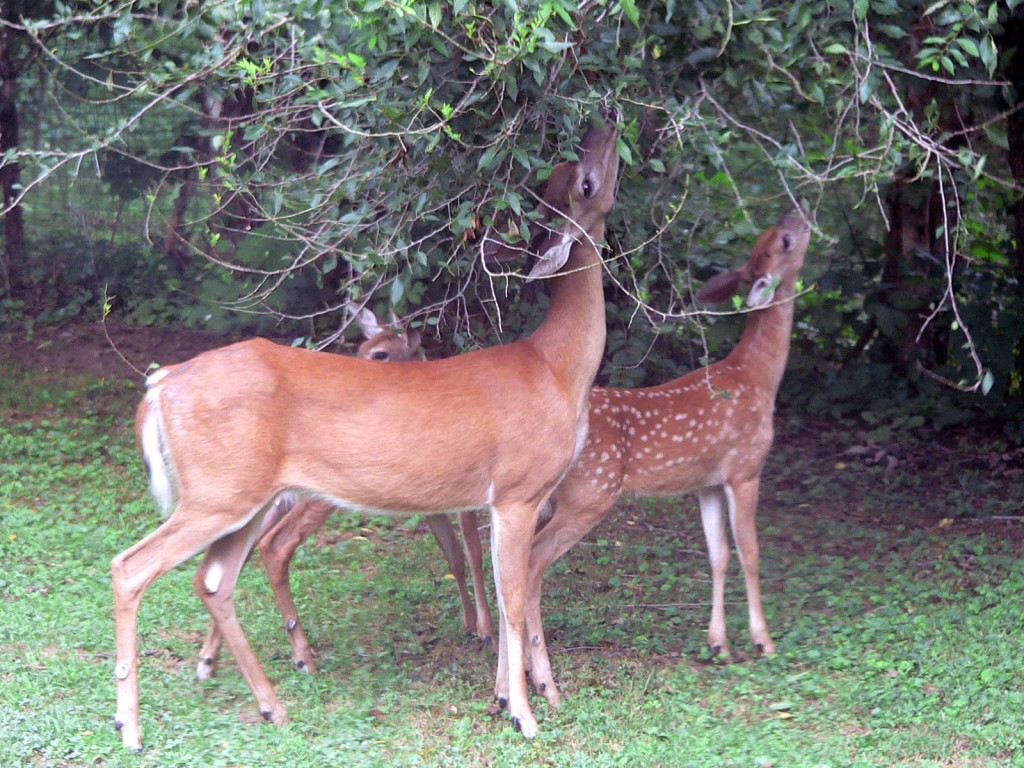Reducing Deer Damage in Landscapes
go.ncsu.edu/readext?377321
en Español / em Português
El inglés es el idioma de control de esta página. En la medida en que haya algún conflicto entre la traducción al inglés y la traducción, el inglés prevalece.
Al hacer clic en el enlace de traducción se activa un servicio de traducción gratuito para convertir la página al español. Al igual que con cualquier traducción por Internet, la conversión no es sensible al contexto y puede que no traduzca el texto en su significado original. NC State Extension no garantiza la exactitud del texto traducido. Por favor, tenga en cuenta que algunas aplicaciones y/o servicios pueden no funcionar como se espera cuando se traducen.
Português
Inglês é o idioma de controle desta página. Na medida que haja algum conflito entre o texto original em Inglês e a tradução, o Inglês prevalece.
Ao clicar no link de tradução, um serviço gratuito de tradução será ativado para converter a página para o Português. Como em qualquer tradução pela internet, a conversão não é sensivel ao contexto e pode não ocorrer a tradução para o significado orginal. O serviço de Extensão da Carolina do Norte (NC State Extension) não garante a exatidão do texto traduzido. Por favor, observe que algumas funções ou serviços podem não funcionar como esperado após a tradução.
English
English is the controlling language of this page. To the extent there is any conflict between the English text and the translation, English controls.
Clicking on the translation link activates a free translation service to convert the page to Spanish. As with any Internet translation, the conversion is not context-sensitive and may not translate the text to its original meaning. NC State Extension does not guarantee the accuracy of the translated text. Please note that some applications and/or services may not function as expected when translated.
Collapse ▲Originally posted by Charlotte Glen. Updated by Matt Jones 5/11/21
An attractive, healthy landscape can increase a home’s value, enhance sustainability, and improve quality of life for individual home owners and residents of the surrounding community.
All of your landscape work and investment can be ruined overnight if you do not select deer resistant varieties or take measures to protect plants from deer browsing. The most effective strategies to minimize deer damage in residential landscapes are the use of repellents, fencing, and plant selection to emphasize species deer prefer not to eat.
N.C. Cooperative Extension’s Chatham County Center offered a free class on this topic that focused on deer resistant plants adapted to piedmont landscapes. While there is no plant that is completely deer proof, there are many plants deer prefer not to eat if other options are available. Review the resources below to learn which plants are least likely to be damaged by deer and other non-lethal techniques you can use to minimize deer damage in your landscape.
Review slides from presentations on reducing deer damage in landscapes:
Deer Resistant Plants
- Deer resistant plants fact sheet
- Search the NCSU Going Native plant database for deer resistant native plants
- Search NC Extension’s Plant Database for plants recommended for NC landscapes
Constructing Deer Fencing
- Deer problems in residential areas, NC Wildlife Resources Commission fact sheet – includes detailed fencing diagrams
- Controlling deer damage – includes fencing diagrams, from Missouri Extension
- Wildlife damage management – Deer, includes fencing diagrams
- How to build a plastic mesh deer exclusion fence – Purdue Extension
Deer Repellents
- Overview and cost analysis of deer repellents, Alabama Extension
- Using deer repellents, Maryland Extension
Learn More About Reducing Deer Damage:
- White-tailed deer – Wildlife Chapter, Extension Gardener Handbook
- Gardening in deer country, Village of Pinehurst
- Reducing deer damage using a two-tier fence system, Clemson Extension
Deer Biology
- Wildlife Profile – Deer, from NC Wildlife Resource Commission
- White-Tailed Deer Overview, NC Wildlife Resources Commission
Use Extension Search to find research-based information from Cooperative Extension systems across the U.S.
Visit your local Cooperative Extension center to learn more about gardening and landscape care. Find your county Extension center.
Subscribe to the Chatham Gardener email list to receive timely updates on sustainable lawn, garden, and landscape care for the central NC Piedmont.





